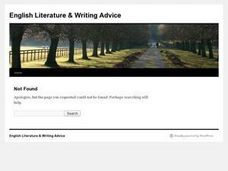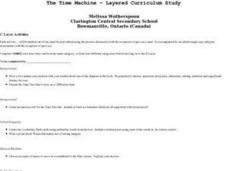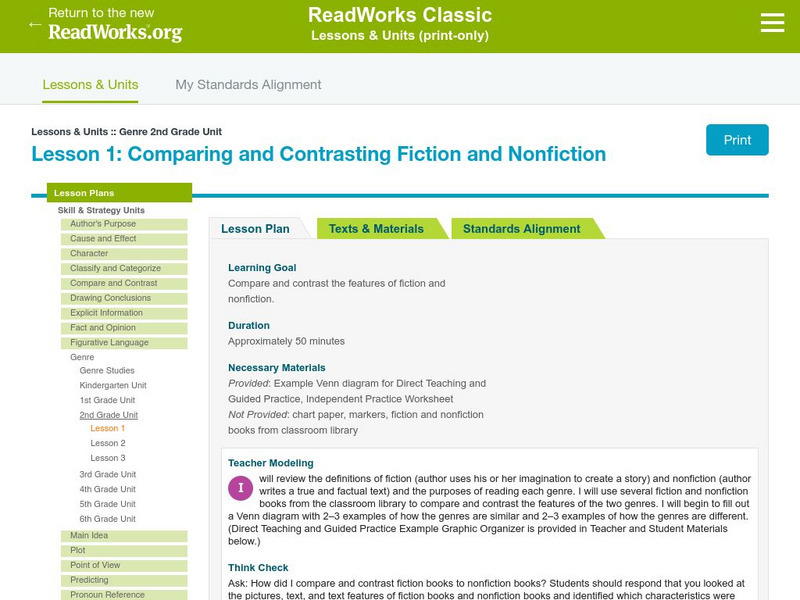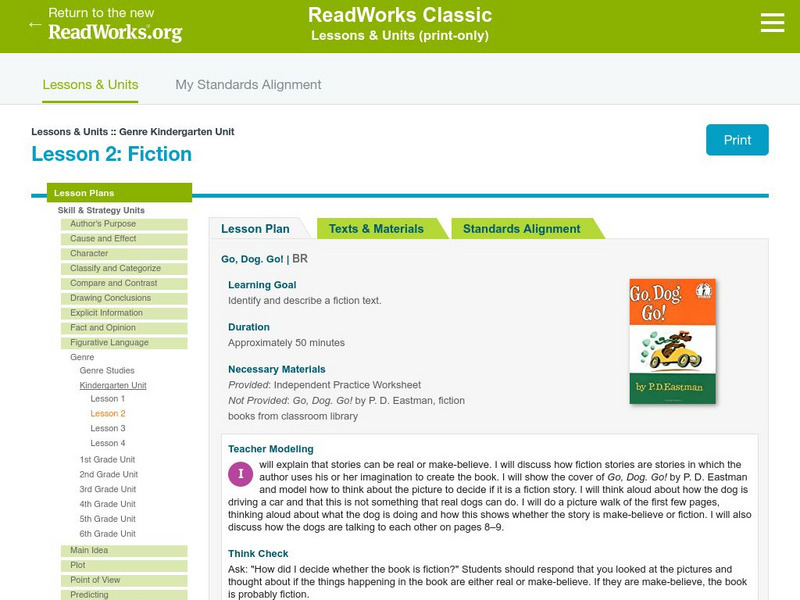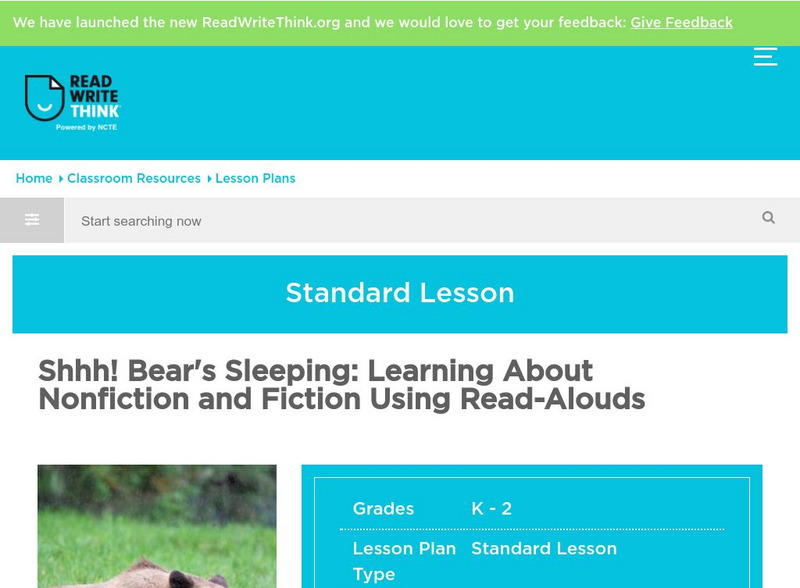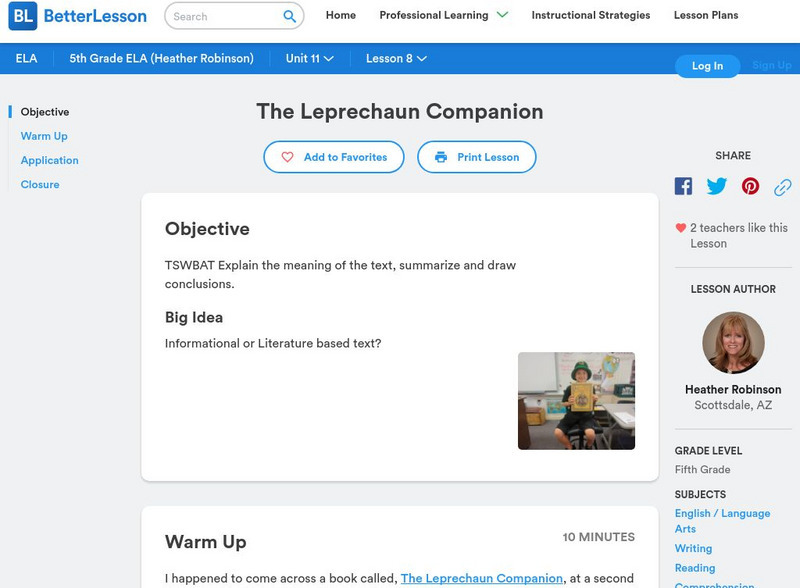Curated OER
Finding Your Story: Helping Students Begin Their Memoir
Students write their memoir. In this memoir lesson plan, students study the differences between an autobiography and a memoir. Students construct an outline as the basis for their memoir.
Curated OER
I Knew Him When
Students research the life of Abraham Lincoln and write a first-person account from the viewpoint of someone who knew him. They develop a timeline of Lincoln's life, research a particular period of his life, and write a first-person...
Curated OER
Journeys
Learners write a story using their journey to school as the setting. In groups, they discuss their experiences and browse through books to get ideas for their story. They practice using a thesaurus to find new verbs or adjectives they...
Curated OER
Bon Voyage - Literature Travel Unit
Eighth graders locate and interpret information about the culture of another country using multi-media tools. Students read and interpret literature about characters and cultures from a foreign country. Students create a travel guide...
Curated OER
The Time Machine - Layered Curriculum Study
Students complete three activities of their choice from a given list surrounding their study of H.G. Wells' novel, The Time Machine. They choose activities from each of the seven learning styles.
Read Works
Read Works: Grade 2: Three Lesson Unit: Genre
[Free Registration/Login Required] A series of three lesson plans designed to teach students to compare and contrast fiction and non-fiction, identify the characteristics of non-fiction, and use guide words to locate topics in an...
Read Works
Read Works: 3rd Grade Lesson: Science Fiction
[Free Registration/Login Required] A lesson in which students use the book Commander Toad and the Intergalactic Spy by Jane Yolen to learn about the characteristics that define science fiction. Lesson includes direct teaching, guided...
Read Works
Read Works: 2nd Grade Lesson: Compare/contrast Genres
[Free Registration/Login Required] A lesson in which students use fiction and nonfiction books from a classroom library to identify the similarities and differences between fiction and nonfiction and to create a Venn diagram...
Read Works
Read Works: Genre 4th Grade Unit: Historical Fiction
[Free Registration/Login Required] A unit of instruction in which learners use the book Meet Addy: An American Girl by Connie Porter to learn about the characteristics that define historical fiction. Lesson includes direct teaching,...
Read Works
Read Works: 3rd Grade Lesson: Realistic Fiction
[Free Registration/Login Required] A lesson in which students use the book Allie's Basketball Dream by Barbara E. Barber to learn about the characteristics that define realistic fiction. Lesson includes direct teaching, guided practice,...
TES Global
Tes: Analyzing & Comparing Non Fiction
[Free Registration/Login Required] Resource notes to aid students as they analyze different types of nonfiction. The GAP (genre, audience, and purpose) acronym is provided to use when comparing nonfiction texts.
Read Works
Read Works: Lessons: Click, Clack, Moo: Cows That Type
[Free Registration/Login Required] A lesson plan and materials to teach kindergarten students how to tell the difference between fiction and nonfiction.
Read Works
Read Works: Lessons: Go, Dog. Go!
[Free Registration/Login Required] A lesson plan and materials to teach kindergarten students to identify and describe a fiction text.
ReadWriteThink
Read Write Think: Shhh! Bear's Sleeping: Learning About Nonfiction and Fiction
Students explore the distinction between the fiction story Bear Snores On and the nonfiction book Every Autumn Comes the Bear.
Better Lesson
Better Lesson: The Leprechaun Companion
In this lesson, 5th graders will explain the meaning of a text and its genre, summarize it, and draw conclusions. They work with a book called The Leprechaun Companion which is a cross between informational and literary text.
Read Works
Read Works: 1st Grade Lesson: Classifying Texts
[Free Registration/Login Required] A instructional activity in which students use the books Froggy Goes to School by Jonathan London and Life Cycle of a Frog by Angela Royston to learn to classify texts as fiction or nonfiction. Lesson...
Read Works
Read Works: 1st Grade Lesson: Purposes for Reading
[Free Registration/Login Required] A instructional activity in which students use the books Nature's Food Chains: What Polar Animals Eat by Joanne Mattern, Life Cycle of a Frog by Angela Royston, and Froggy Goes to School by Jonathan...
Read Works
Urban Education: Exchange: Read Works: 3rd Grade Lesson: Fantasy
[Free Registration/Login Required] A lesson in which young scholars use the book Zathura by Chris Van Allsburg and fantasy texts from the classroom library to learn about the characteristics that define fantasy. Lesson includes direct...
British Library
British Library: 19th Century Non Fiction Texts: Work & Welfare
This thematic collection will allow students to read and understand 19th-century non-fiction texts, and support them in identifying key features for a range of genres, audiences, and purposes. Each source is accompanied by original...
British Library
British Library: 19th Century Non Fiction Texts: Gender, Behaviour & Etiquette
This thematic collection will allow students to read and understand 19th-century non-fiction texts, and support them in identifying key features for a range of genres, audiences, and purposes. Each source is accompanied by original...




